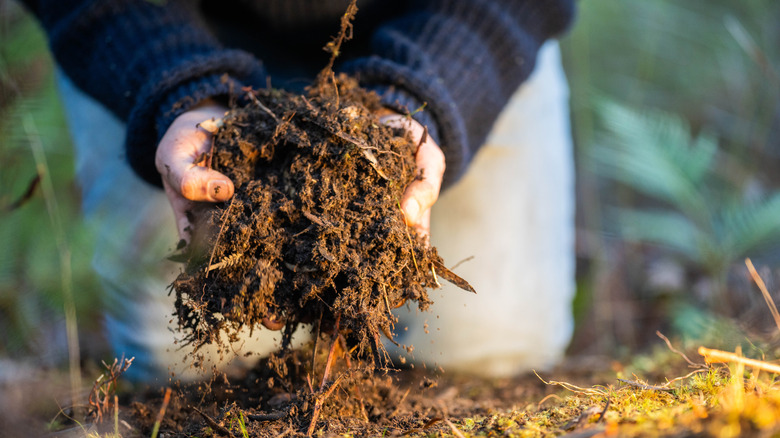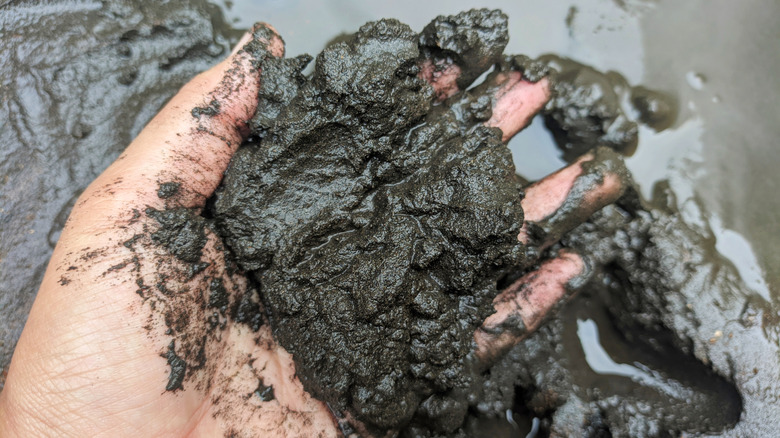Figure Out Your Garden Soil's Type By Using Just Your Hand
Knowing your soil type is as important as knowing the light conditions and rainfall averages when it comes to choosing the right plants for your garden. If you have really sandy soil, for example, you know it's likely low in nutrients and doesn't hold onto moisture well. Before that ends up stressing your garden, you can choose plants that thrive in sandy soil. You can also prep your soil for successful planting by adding compost or making sure to irrigate regularly between rain events to better nourish your flowers and shrubs.
The best way to figure out what type you have is to send in a sample to your local extension office for a professional soil test. This will tell you the mineral makeup and even provide a breakdown of the exact nutrient content. But, if you don't have the time for a professional test, you can still get a reasonable sense of the mineral makeup of your soil using nothing more than your fingers (and some water).
Just make sure to repeat this method in a few different areas of your yard. You might find that you have heavy clay in one area but sandy clay in another. Maybe your beds are perfectly loamy, but the soil in those bare patches of your lawn is almost entirely made up of sand. Doing this test in various spots can give you some insights into why plants might be thriving in one area, but barely hanging on in another despite getting the same amount of light and water.
How to check your garden's soil type with your hand
If you want to get a sense of what's really in your topsoil without sending in samples to a lab, start by scooping a little soil into the palm of your hand. Then, mist it with water and roll it around in your palm to evenly moisten the soil, as if you were kneading a small ball of dough. The goal is to add enough moisture to make it the consistency of a soft dough or putty. If it becomes too wet, you can sprinkle in more soil to get the consistency right.
Now, observe the texture and consistency of the soil. Does it fall apart so easily that you can't shape it into a ball? If so, note whether it feels gritty or powdery. A coarse, gritty texture, especially with visible grains, is probably sandy soil. If it feels more powdery or even slippery, it may be silty soil. If you are able to form it into a ball, but it sticks to your hands, you've got clay soil. Finally, if none of the descriptions above sound like they apply to your soil, you might have loam. Loamy soil is neither gritty nor slippery, and it holds its shape better than a sandy or silty soil, but not quite as well as clay-heavy soil.

